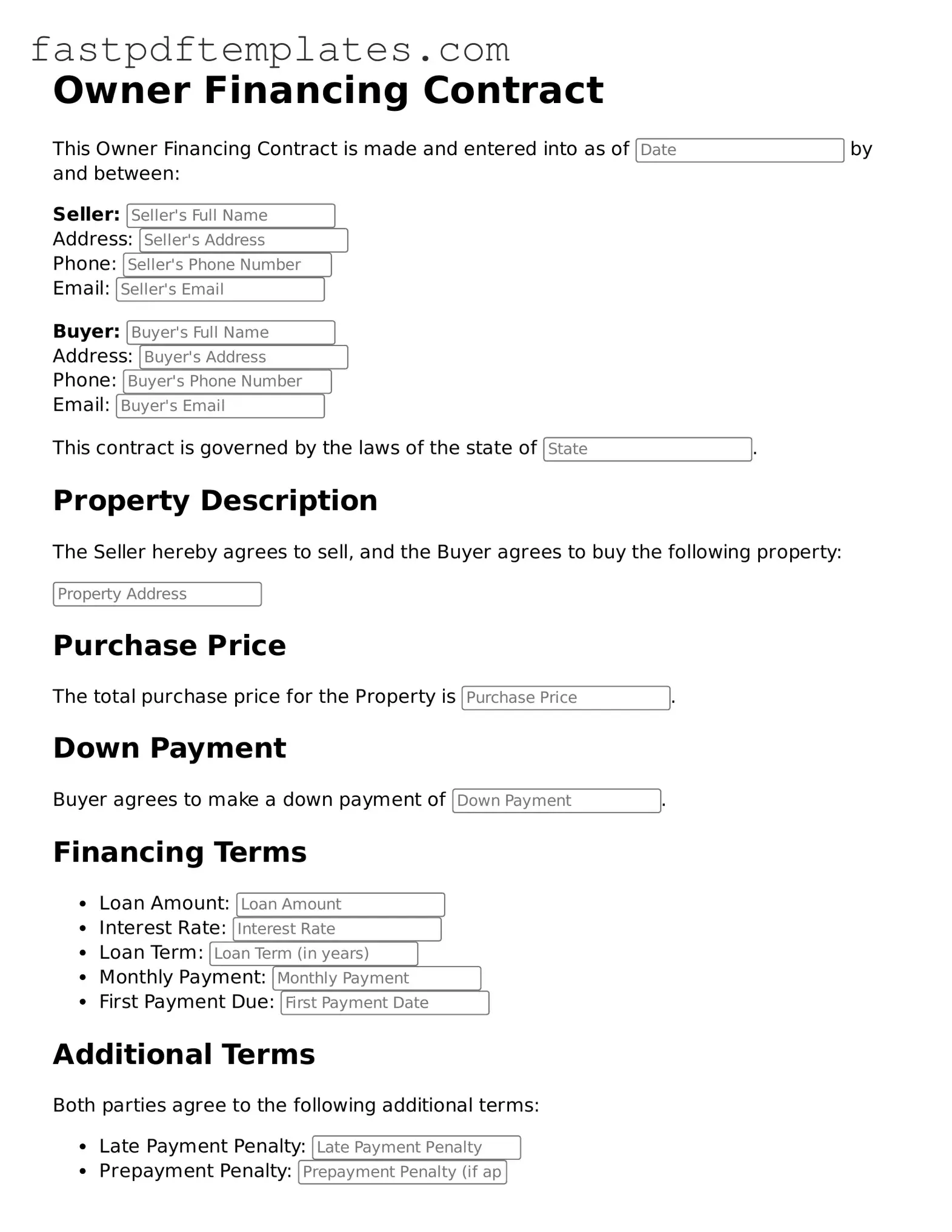The Owner Financing Contract form is similar to a Purchase Agreement. Both documents outline the terms of a property sale, including the purchase price, closing date, and any contingencies. However, while a Purchase Agreement typically involves a traditional lender, an Owner Financing Contract allows the seller to finance the purchase directly, making it a more flexible option for buyers who may not qualify for conventional loans.
Another document that shares similarities is the Lease Option Agreement. This contract allows a tenant to lease a property with the option to purchase it later. Like the Owner Financing Contract, it provides a pathway to homeownership without immediate full payment. The key difference lies in the initial arrangement; a Lease Option Agreement starts with renting, while an Owner Financing Contract begins with a direct sale.
The Rent-to-Own Agreement is also comparable. In this arrangement, a buyer rents the property with the intention of buying it after a set period. Similar to the Owner Financing Contract, it allows for gradual equity building. However, Rent-to-Own typically includes a rental component, while Owner Financing focuses on direct financing from the seller.
The Mortgage Agreement is another related document. This legal contract involves a borrower and lender, where the lender provides funds to purchase a property, and the borrower agrees to repay the loan over time. While both documents secure financing for property transactions, the Owner Financing Contract eliminates the need for a bank, simplifying the process for both parties.
The Promissory Note is closely tied to the Owner Financing Contract as well. This document outlines the borrower's promise to repay the loan under specified terms. In owner financing, the Promissory Note is often included as part of the overall agreement, detailing the repayment schedule and interest rate, which are crucial for both the buyer and seller.
The Deed of Trust is another important document that works in conjunction with an Owner Financing Contract. This document secures the loan by giving the lender a claim to the property until the borrower repays the debt. It functions similarly to a mortgage, but in owner financing, it provides the seller with security for the loan they are extending to the buyer.
The Land Contract, or Contract for Deed, is also similar. This agreement allows the buyer to make payments directly to the seller over time while the seller retains legal title to the property until the full purchase price is paid. This structure resembles owner financing but emphasizes the installment nature of payments and the retention of ownership by the seller until completion.
Lastly, the Seller Financing Addendum can also be compared. This document is often used to add seller financing terms to a standard Purchase Agreement. It provides additional details on how the financing will work, including interest rates and payment schedules, similar to the provisions found in an Owner Financing Contract.
